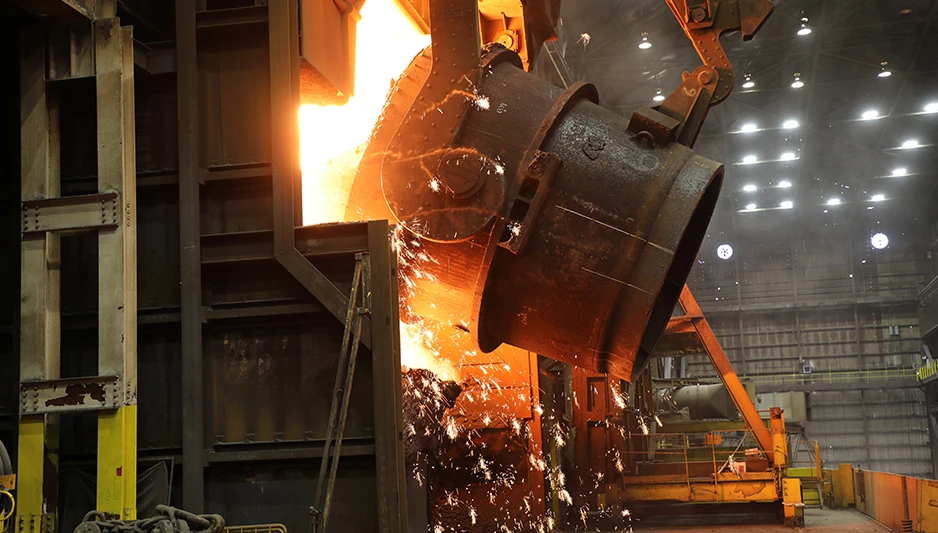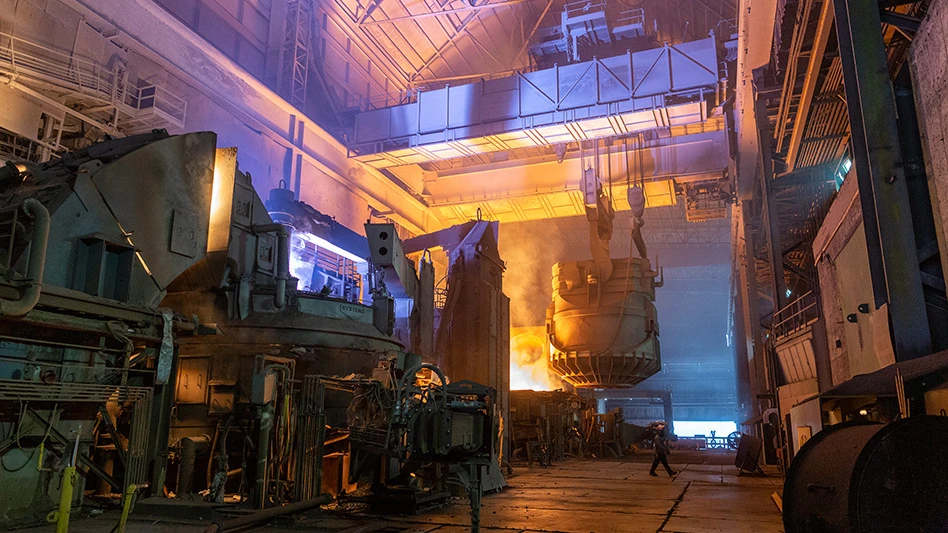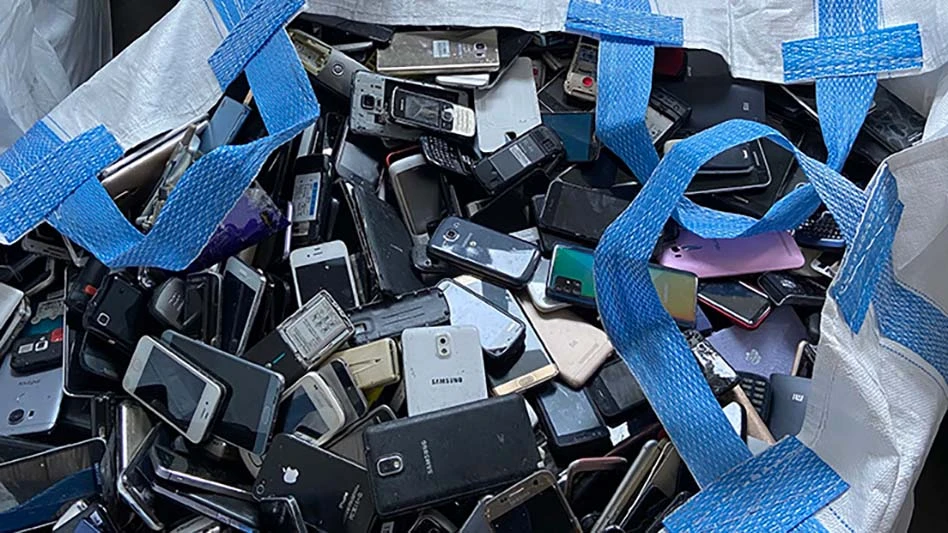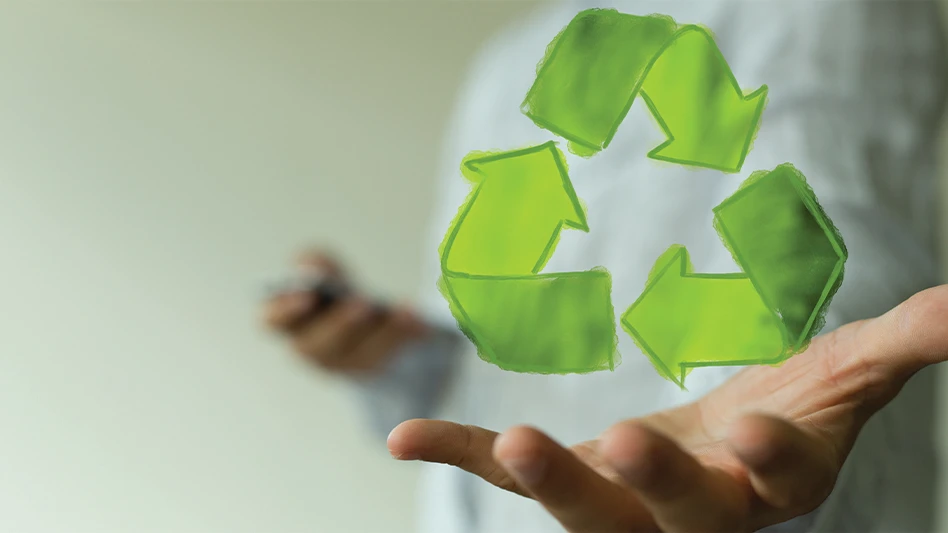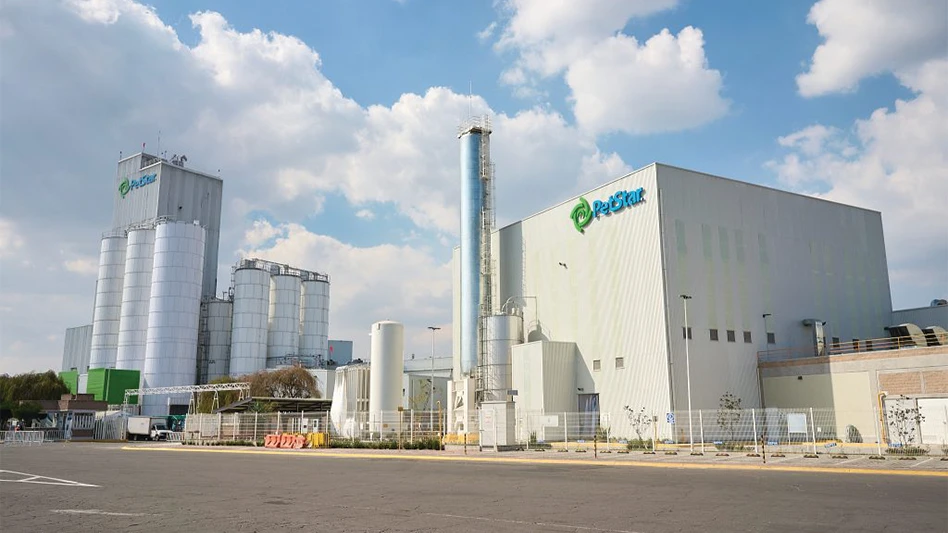 The Spanish multinational paper and corrugated packaging manufacturer SAICA, based in Zaragoza, Spain, in the country’s Aragon region, has been making headlines in recent months with regard to its U.K. growth strategy in each of the three business areas the company operates.
The Spanish multinational paper and corrugated packaging manufacturer SAICA, based in Zaragoza, Spain, in the country’s Aragon region, has been making headlines in recent months with regard to its U.K. growth strategy in each of the three business areas the company operates.
This spring the company’s Paper Division officially opened its 100%-recycled-content paperboard mill near Manchester, U.K., adding to its collection of six other paper mills based in Spain and France. It is the company’s first containerboard mill based in the U.K.
Dubbed PM-11 (for Paper Mill 11), the state-of-the-art mill cost nearly £300 million and was the first new containerboard mill to be built in the U.K. in decades, the company has reported. The mill produces lightweight performance paper for corrugated packaging.
Helping to supply that mill, the company’s Natur Division also expanded in the U.K. with the purchase of nine recovered paper warehouses in England and Scotland from Cutts Recycling, Stirling Fibre and Houghton’s Waste Paper.
And completing the chain through to the production of corrugated packaging, the group’s Pack Division has invested a cool £66 million over the last few years to bring the 19 newly acquired corrugated factories in the U.K. up to SAICA’s standards.
It’s all part of an ongoing £500 million investment plan to grow in the U.K., taking advantage of the excess capacity of recovered paper in the country, a place that SAICA President Ramón Alejandro says hasn’t had the capacity to recycle all of the recovered fibre that is collected. But expansion and innovation have been part of the culture at SAICA, a company that has installed an impressive collection of four new paper mills over the last 20 years.
Having been able to strategically expand in recent years even as the European Union struggled through the world economic crisis is a testament to SAICA’s market focus and clear vision. The company’s leaders clearly know where they’re headed and how to get there.
Early Successes
Founded as a small paper mill, family-owned SAICA got its start in 1941 by brothers Jaime and Manuel Balet Salesa, their brother-in-law Ramón Aragüés, friend Joaquín Rived and a number of other investors. The company’s name, SAICA, an acronym for Sociedad Anomima Industrias Celulosa Aragonesa, roughly translates to Cellulose Industries of Aragon.
Success in the company’s early years led SAICA to expand as a manufacturer of paper for corrugated boxes. Today the company is still owned by the extended family of the three original founders, employs more than 8,000 full- and part-time employees and operates more than 100 facilities in six countries for the three major business divisions it operates in. In 2012 the company posted total consolidated sales of €2.1 billion.
Alejandro describes the company as a vertically oriented, innovative and highly integrated organization that is closing the loop on corrugated paper while serving as a model of sustainability for recyclers of just about any commodity.
“We can put a box into the market, but we can also guarantee that we will be able to collect it and to recover it, to prevent it from going to the landfill and to close the loop,” Alejandro observes.
The company’s strategy of vertical integration began early in its history, Alejandro says. “In the mid-1970s the company decided to integrate upwards, by investing in recovered paper centres, and downwards, by investing in corrugated plants,” he says.
While the company offers a range of recycling services to its customers, SAICA’s core activity, the manufacture of recycled paper for corrugated packaging, has driven just about all of the major strategic moves it has made in recent years. Its three major divisions: Natur, Paper and Pack, might be described as the three legs of the proverbial stool that have supported the company in achieving its mission. Having clearly mastered its work in the Iberian Peninsula, SAICA has taken the next steps to expand its footprint geographically with what has become a proven strategy.
Three Divisions
The centerpiece of SAICA’s business is its Paper Division, dedicated to sustainably producing high-performance, low-basis-weight containerboard from 100%-recycled paper. Much of this paper is used by the company’s Pack division, the producer of a variety of corrugated packaging products.
The packaging, used primarily for fast-moving consumer goods, foods and beverages, has witnessed strong demand in recent years. It’s a somewhat recession-proof sector that hasn’t experienced the declines of other sectors, Alejandro explains, leading to milder declines during the height of the economic crisis, followed by moderate growth in recent months. It’s a sector that’s also been boosted by strong internet sales in recent years, a business that has grown to depend upon corrugated packaging as a necessary part of doing business.
Another market driver, Alejandro says, has been increased demand among retailers for shelf-ready packaging, or boxes that can be used for both transport and placement on supermarket shelves.
Ultimately supplying Pack is SAICA Natur, the recovered fibre subsidiary of the company and the front-end collector of OCC (old corrugated containers) for recycling into new containerboard, since it was established in 1975. This division has diversified over the years, as SAICA realized that providing a full suite of services was a win-win proposition.
“When you go to a supermarket, they want you to take care of all the waste, not only the corrugated boxes or OCC,” Alejandro explains.
 Currently Natur manages around 2.7 million tonnes of waste per year through recycling of raw materials, recovery and preparation of solid fuels and waste management, including specialized services.
Currently Natur manages around 2.7 million tonnes of waste per year through recycling of raw materials, recovery and preparation of solid fuels and waste management, including specialized services.
Natur also is dedicated to finding sustainable solutions for its customers. For instance, in Spain the company is investing in technology to prepare the residuals from recycling operations for use as solid recovered fuels.
“Usually these are the same customers from whom we collect recovered paper,” explains Alejandro. “What we try to do is minimise what goes to landfill for all this waste, so we are trying to find a solution for each type of waste.”
The company’s Paper Division falls between the two. “With the raw material of Natur we produce paper, which is the raw material to produce corrugated boxes, which at the end, once they have been used, becomes the raw material for Natur,” he says.
Sustainable Paper
Sustainability and doing more with less has been a focal point of all three divisions, being particularly evident in how the company has approached papermaking. A key innovation has been SAICA’s push to make lighter weight, high-performance containerboard paper, effectively minimising the amount of water and electricity per tonne of paper produced.
Alejandro says the company installed its first lightweight paper machine in 2000, and it was the first machine of its kind in the world, he says.
“We went to the paper machine producers, and we told them we want to design a light paper machine to produce containerboard from the beginning,” he says. “Before that machine started production, the minimum gramature was around 105 to 100 grams. With this machine, we went down to 75 grams.” Alejandro adds that the machine, located in Zaragoza, produces roughly 400,000 tonnes of paper per year with an average gramature of 89 grams.
While this gramature cannot be used for every type of box, Alejandro says, it is ideal for those containers designed for ease of transport, such as foodstuffs. Today the company has three lightweight paper mill lines: two in Spain and the new U.K. mill, which can produce 480,000 tonnes of paper per year, at a width of 7.5 metres.
Most of the company’s mill investments have been greenfield projects—new paper mills rather than the purchase of existing plants. “Most of what’s for sale are with old technology,” says Alejandro, “which we think will not be competitive in the future.”
Another integration SAICA Paper has embarked upon has been investing in combined-heat-and-power (CHP) technology for its paper mills, a strategy that began in 1987, when SAICA was the first industrial company in Spain to use a CHP plant to produce electricity and steam at the same time, and to use the steam within the paper production process. Currently all of the company’s paper mills in Spain and the U.K. use CHP technology to meet their energy needs.
All the machines at the company’s El Burgo de Ebro complex in Spain have cogeneration plants to produce electricity and steam, and the plants operate with an efficiency of close to 80%, Alejandro says. In addition the company generates biogas in its effluent treatment plants, and that biogas is used in cogeneration plants.
Two of the company’s paper mill sites have plants for treating wastewater used in the production processes. The company’s machines in the U.K. and Spain also have energy recovery plants to generate electricity from nonhazardous waste and sludge derived in the production process.
Most of SAICA’s paper is sold within a 1,500-kilometre radius, Alejandro says, while the recovered paper is sourced from Europe, the U.K. and Ireland.
U.K. Expansions
Alejandro says the company’s decision to expand into the U.K. in recent years was based upon a repeat of its successful strategy. “We were selling paper in Portugal and in France, and then we started to buy corrugated companies in these countries,” says Alejandro. “We started to get this integration with our customers.”
The company’s growth in Spain began to reach its potential by the end of the 1990s, Alejandro says. Meanwhile, the U.K. was viewed as ripe for development.
“The U.K. is a country that collects 8 million tonnes of OCC,” says Alejandro, “and is only able to recycle 4 million tonnes inside of the country.” The country also didn’t have the capacity to produce the lightweight paper needed to manufacture corrugated boxes, Alejandro notes.
 Alejandro says it didn’t make sense for the country to export its excess recovered fibre, only to then import lightweight containerboard paper as the furnish for corrugated packaging. Hence SAICA’s decision to build the new mill in Greater Manchester that is capable of making 480,000 tonnes of containerboard each year, using 100%-recovered fibre.
Alejandro says it didn’t make sense for the country to export its excess recovered fibre, only to then import lightweight containerboard paper as the furnish for corrugated packaging. Hence SAICA’s decision to build the new mill in Greater Manchester that is capable of making 480,000 tonnes of containerboard each year, using 100%-recovered fibre.
Alejandro says the mill consumes 40% less water and 50% less electricity per tonne of paper produced than the standard industry mill and it operates with an efficiency of close to 80%.
“Today 100% of the raw material for this machine comes from the U.K. and Ireland, and around 80% of the output of this machine is sold in the U.K. and Ireland,” Alejandro says.
“What we have done in the U.K. is to apply the model that we have in the Iberian Peninsula,” Alejandro says. That strategy—one of integrating its products with customers’ needs and the supply sector—involved purchasing a number of recovered paper depots for collection of raw materials as well as corrugated plants. Ultimately, the acquisitions and expansions have allowed SAICA to “close the loop on Pack,” Alejandro says.
Parallel Growth
As for the future, he says the company’s ongoing strategy is to continue to grow its three divisions in tandem.
“We want to have integration, so that means if we grow in one of them, we should grow in the other ones,” Alejandro explains. Over the last year, the company also has witnessed overall growth of around 1% to 2%, and Alejandro says he expects that rate to continue in the near term.
SAICA’s multipronged strategy and eye for opportunities also will continue, he says. “Our strategy has always been to build greenfield paper recycling mills with the latest technology in order to be very efficient and very competitive,” he explains. “And then to acquire recovered paper centres and corrugated box plants.”
Today, he says, the financial position of the company is very strong: SAICA will carry no debt on its books going into 2014, even with the recent £500 million investment in the U.K.
Alejandro says SAICA’s integration and focus on sustainability are two traits making the company unique in its field. Leading the trend for lightweight paper production is another company hallmark, he says.
“The way we produce the energy, and the way we produce the paper, we really are environmentally friendly,” he says. “We try to sell ourselves as a company that sells sustainable solutions.”
The author is managing editor of Recycling Today Global Edition.
Latest from Recycling Today
- In memoriam: Benny McGill
- Autocar releases Smart Battery Cable to advance refuse truck fire safety
- PLASTICS launches Positives of Plastics website
- Impact Air Systems launches compact ZAC400
- PCA to shut down paper machines at Washington containerboard mill
- BMRA provides landfill guidance for UK shredder operators
- Fornnax high-capacity tire recycling plant
- EU introduces measures to secure raw materials, strengthen economic security
